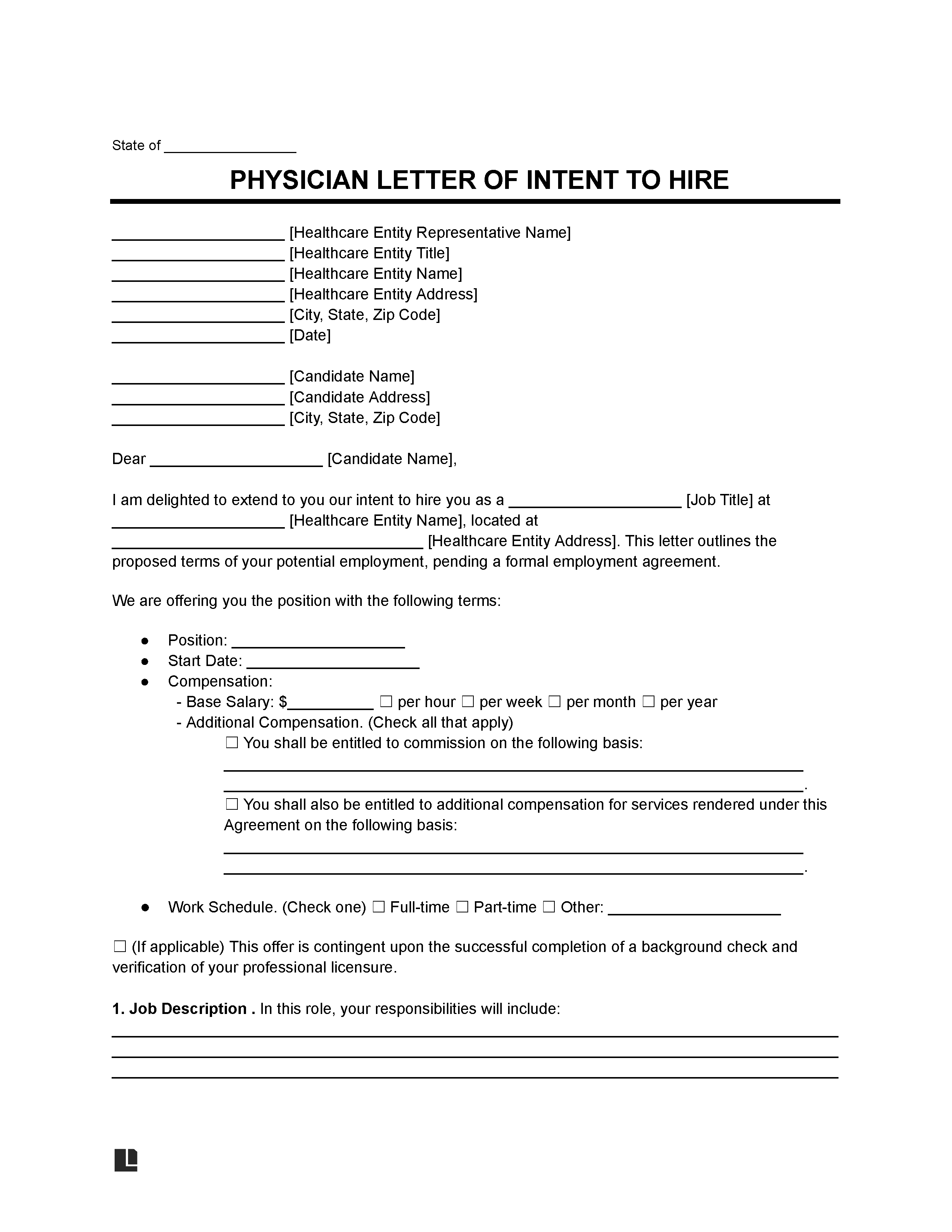A physician letter of intent, sent by an employer to a physician post-interview and pre-contract, expresses the intention to hire and outlines key employment terms for negotiation. Advised by legal counsel, physicians are often recommended to refrain from signing if terms are unsatisfactory.
Signing an LOI indicates mutual interest and initiates exclusive negotiations, potentially disadvantaging physicians in discussions on salary and contract length. A favorable LOI, however, can lead both parties to craft a detailed employment agreement, specifying salary, contract duration, responsibilities, and start date.
Is a Physician Letter of Intent for Employment Binding?
A physician’s letter of intent is typically non-binding, allowing for adjustments after it’s signed. This flexibility ensures a physician isn’t strictly bound by the initial terms.
However, by signing, they often commit to exclusive negotiations with the employer for a specific period, maintain confidentiality during these discussions, and cover their own legal costs.
Key Components in a Physician Letter of Intent
- Compensation: State the salary offer, ensuring it aligns with regional standards and the physician’s expertise. Include details on any signing bonuses, relocation allowances, or temporary housing support.
- Contract Duration: Clearly specify the terms of the initial contract and the notice period required for termination by either party. Propose a start date.
- Role Expectations: Outline the physician’s responsibilities, including job nature (full/part-time), expected work hours per week, on-call duties, hospital rounds, staff hiring, and procedures to be undertaken.
- Benefits Package: Detail the benefits on offer, such as medical and dental insurance, retirement plans, profit-sharing, malpractice and tail coverage, CME opportunities, life and disability insurance, vehicle provision, and leave entitlements.
- Non-Binding Clause: Emphasize that the letter is not legally binding to encourage the physician to agree without legal obligations at this stage.
- Writing Essentials: Aim for conciseness to maintain clarity. A signed letter conveys commitment. Consider mentioning if a non-compete clause will be discussed during contract negotiations.


